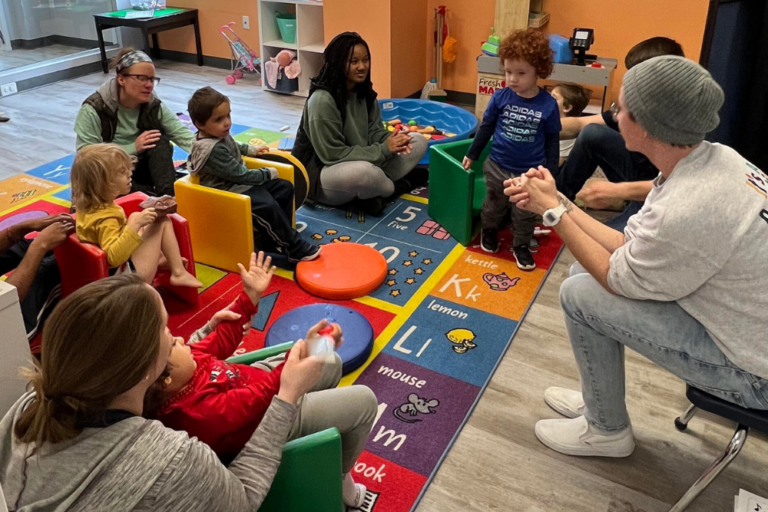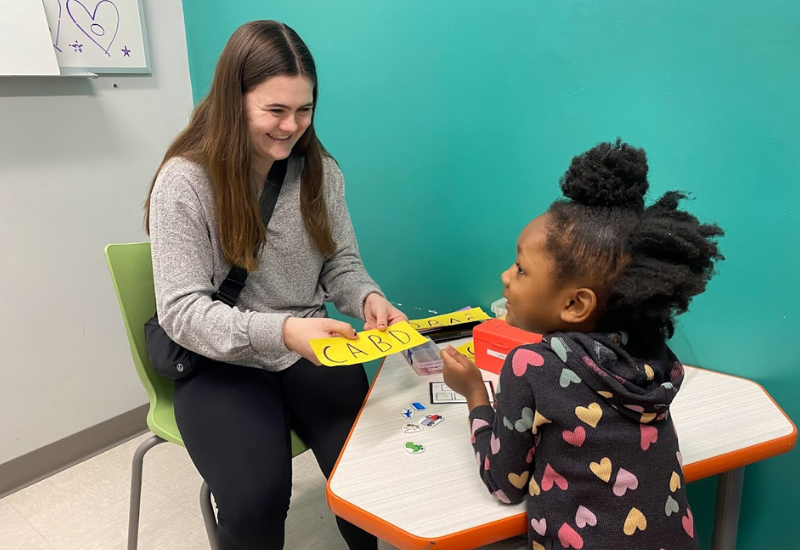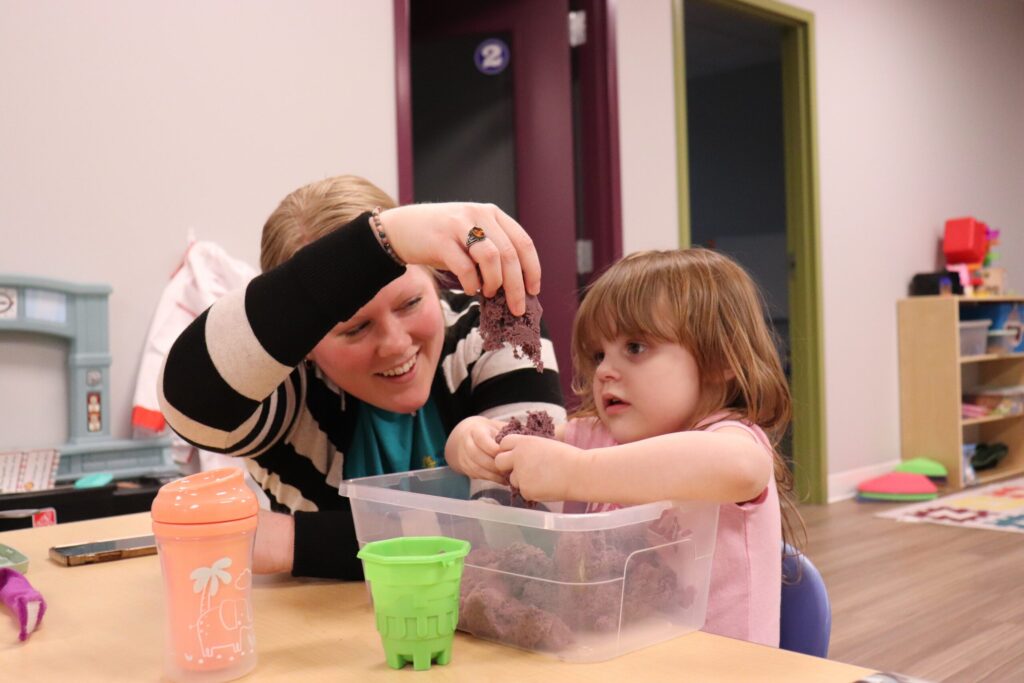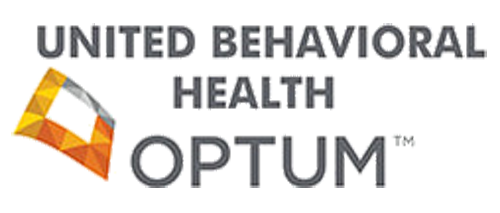Autism Services in Burlington County, NJ
Clinic Locations
Get a Consultation
Autism services available for children ages 2 to 6 .
At Helping Hands Family in Burlington County, NJ, we offer a warm and welcoming environment where your child with autism can thrive! Our team of Board-Certified Behavior Analysts (BCBAs) and Registered Behavior Technicians (RBTs) creates autism treatment plans that help your child improve their:
- Communication
- Social skills
- Behavior
- Overall awareness
At our autism clinic in Burlington County, NJ, we provide personalized, fun-filled ABA therapy sessions designed to make learning engaging and effective. ABA therapy is widely recognized as the best way to help children with autism develop essential skills. It is a proven, results-driven approach endorsed by:
- The US Surgeon General
- The American Psychological Association
Our autism services help your child reach their next big milestone with patience, trust, and care. Parents play a key role in reinforcing progress, supported by our ABA Services in NJ.

How ABA Therapy Works
At Helping Hands Family in Burlington County, NJ, our ABA therapy makes learning fun! We use a play-based, child-led, and kid-friendly approach to improve:
- Communication
- Behavior
- Learning
- Focus
ABA therapy is built on the idea that a child’s environment plays a key role in their ability to grow and learn. We create a stimulating and exciting space that helps children learn in a natural and engaging way.
What makes our ABA therapy special? It’s personalized! Our autism services don’t use a one-size-fits-all approach. Instead, we take the time to understand your child’s unique needs and interests. During an initial consultation, our Board-Certified Behavior Analysts (BCBAs) work with you to identify which behaviors need reinforcing and which need to be addressed.
Our ABA therapy is:
- Play-based - Using fun activities and games to help children learn and develop new skills.
- Child-led - A therapy approach where the child chooses activities, guiding their own learning process.
We focus on what your child loves—whether it’s specific games or activities—to make learning exciting and fun. Each ABA session is built around:
- Positive reinforcement
- Breaking tasks down into manageable steps
- Celebrating each small success along the way
With our services, your child will receive the care and support they need to grow and thrive from an experienced autism therapist in Philadelphia!
In-Home vs. Center-Based ABA Therapy: What’s Best for Your Child?
At Helping Hands Family in Burlington County, NJ, our flexible ABA therapy will fit your child’s needs—whether at home or in our autism center. The choice depends on your child’s medical necessity.
For some kids, the familiar and structured environment at home helps reduce tantrums and outbursts, making in-home ABA therapy an initial option. For others, visiting our clinic may feel just as comfortable. We’re here to provide the services that work best for your child.
While in-home ABA therapy helps to create a calm, familiar space for learning, we eventually transfer your child to our autism clinic that offers multiple Board-Certified Behavior Analysts (BCBAs) and Registered Behavior Technicians (RBTs). The clinic setting also allows your child to practice communication and socialization.
Our services offer numerous locations throughout the county. Your child can get ABA therapy in Mount Laurel, NJ. Whether at home or at our clinic, we’re here to ensure your child feels comfortable and supported every step of the way!


Parental Involvement in Autism Therapy
At Helping Hands Family in Burlington County, NJ, we believe that parents play a key role in the success of ABA therapy. While the trust and interaction between the ABA therapist and child are essential, your active involvement helps ensure ABA strategies carry over into everyday life.
ABA therapy is a team effort, and when therapists, parents, and families work together, your child will experience greater progress. Our Parent Training teaches parents how to apply ABA therapy strategies at home, which maximizes your child’s growth and development!
If you’re a parent in Burlington County interested in autism therapy, contact us today! We’re here to support you and your child every step of the way.
Common ABA Therapy Techniques and How They Work:
1. Positive Reinforcement
This is one of the most important ABA techniques. It involves rewarding a person immediately after they perform a desired behavior. Rewards can be verbal praise, stickers, or favorite activities. Over time, this encourages the person to repeat the desired behavior.
2. Play-Based Therapy Approach
Play-based therapy uses natural interactions and engaging activities to teach skills in a fun and motivating way. Instead of rigid instruction, the therapist incorporates learning into play, encouraging the child to explore and respond in a relaxed setting.
Example: Teaching a child to recognize colors:
The therapist and child play with colorful building blocks.
- Therapist: “Let’s build a tower! Can you find a red block?”
- The child picks the red block → The therapist cheers, “Great job! Let’s add it to our tower!”
- The child picks the wrong block → The therapist playfully says, “Oops! That one is blue. Can we find the red one together?”
3. Natural Environment Teaching (NET)
NET focuses on learning in real-life situations rather than structured sessions. Skills are taught in everyday activities, making it easier for the child to apply what they learn in daily life.
Example: If a child is learning to say “cookie,” instead of teaching in a classroom, the therapist might encourage the child to ask for a cookie when they see one in the kitchen.
4. Prompting and Fading
Prompts are cues or assistance given to encourage the correct response. These include physical guidance, verbal cues, or visual aids. Over time, prompts are faded (reduced) to encourage independence.
Example: Teaching a child to tie their shoes:
- First, the therapist may physically guide the child’s hands.
- Then, they may switch to verbal instructions only.
- Finally, the child ties their shoes independently.
5.Task Analysis and Chaining
This technique is used to teach complex skills by breaking them down into smaller steps.
- Forward Chaining – Teaching the first step first, then moving to the next.
- Backward Chaining – Teaching the last step first, so the learner experiences success immediately.
Example: Teaching handwashing:
- Turn on the faucet
- Wet hands
- Apply soap
- Scrub hands
- Rinse
- Dry hands
In-Network Insurance








*We also have out-of-network and private pay options. Contact us to verify your insurance benefits today!
